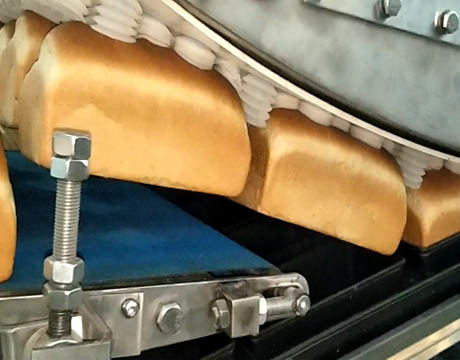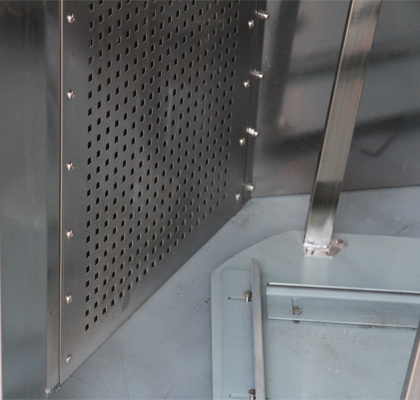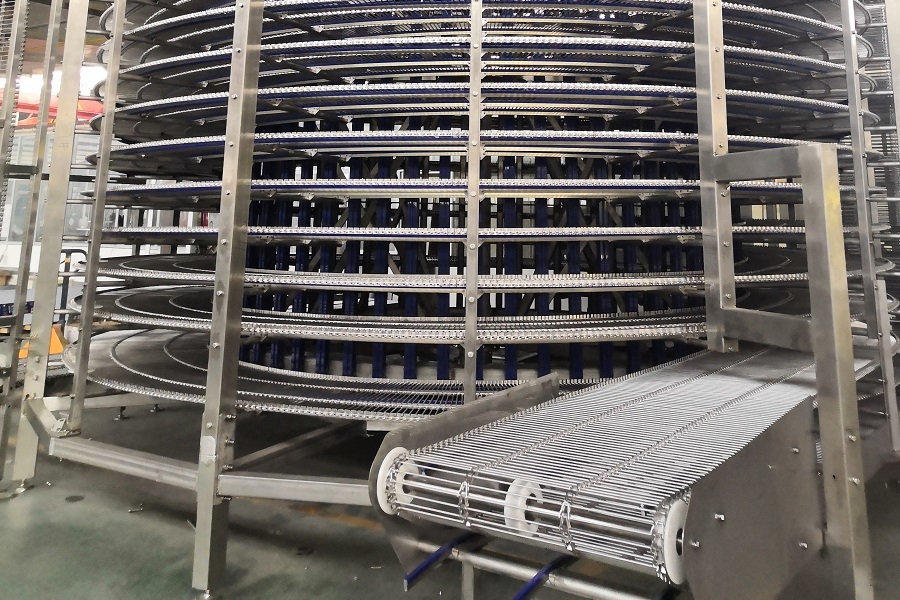Welcome To Know Our Products, We Can Offer You High Quality Products!
WhatsApp / WeChat : 008615127880005
Email : info@aocno.com
Mastering the Art of Baking: Essential Tips for Your New Oven
2025-04-24
Mastering the Art of Baking: Essential Tips for Your New Oven
Baking oven is both a science and an art, and mastering it can transform your culinary skills. Whether you are a novice baker or have some experience under your belt, understanding how to effectively use your new oven is crucial for achieving perfect results. This guide provides you with essential tips and techniques that will elevate your baking game and ensure success every time you turn on your oven.
Table of Contents
- Understanding Your Oven: Types and Features
- Prepping Your Oven for Baking: A Step-by-Step Guide
- The Science of Temperature in Baking: Why It Matters
- Essential Baking Tools and Accessories for Your New Oven
- Techniques for Baking Success: Tips from the Pros
- Troubleshooting Common Baking Issues: What to Look For
- Baking Recipes to Try in Your New Oven
- Frequently Asked Questions
Understanding Your Oven: Types and Features
Before diving into the world of baking, it’s essential to understand the different types of ovens available. Each type has its unique features that can influence your baking results:
Conventional Ovens
These are the most common type of kitchen ovens. They use radiant heat from the top and bottom elements to cook food. When baking, it’s vital to ensure proper air circulation for even cooking.
Convection Ovens
Convection ovens come equipped with a fan that circulates hot air, promoting even cooking and browning. These ovens generally bake faster and at lower temperatures, making them a favorite among experienced bakers.
Steam Ovens
Steam ovens use steam to cook food, which helps retain moisture. This feature is particularly beneficial for baking bread and cakes, providing a soft crumb and crispy crust.
Wall Ovens
Wall ovens can either be conventional or convection and are built into the wall, offering a space-saving design. Their position allows for easy monitoring of baked goods.
Prepping Your Oven for Baking: A Step-by-Step Guide
Before you start baking, proper preparation of your oven is key to achieving the best results:
1. Clean Your Oven
A clean oven ensures that there are no lingering odors or residues that can affect your baked goods. Use a suitable oven cleaner or a mixture of baking soda and vinegar to scrub away any grime.
2. Calibrate Your Oven
Ovens can often be off by several degrees, so it’s essential to calibrate your oven's temperature. Use an oven thermometer to ensure accuracy. If your oven is consistently too hot or too cold, adjust the temperature settings accordingly.
3. Prepare Your Baking Pans
Grease your baking pans properly to prevent sticking. Options include butter, oil, or non-stick spray. For cakes, consider adding parchment paper for extra protection.
4. Preheat Your Oven
Always preheat your oven to the required temperature before adding your batter or dough. This step is crucial for achieving the desired texture and rise in your baked goods.
The Science of Temperature in Baking: Why It Matters
Temperature plays a vital role in baking. Here’s how it affects your results:
1. Leavening Agents
Many baked goods rely on leavening agents like baking powder and baking soda, which react at specific temperatures. Understanding this can help you achieve the perfect rise in cakes and breads.
2. Maillard Reaction
The Maillard reaction is responsible for browning and adding flavor to baked goods. This reaction occurs at higher temperatures, so knowing how to adjust your oven can enhance the taste and appearance of your treats.
3. Moisture Control
Temperature influences how moisture is retained during baking. Higher temperatures can cause moisture loss, while lower temperatures allow for a moist crumb. Adjusting your oven’s temperature can help you achieve the desired texture.
Essential Baking Tools and Accessories for Your New Oven
Having the right tools can make a significant difference in your baking journey. Here are some must-have items:
1. Digital Kitchen Scale
Precision in measurements is crucial for baking. A digital kitchen scale ensures you get the exact amounts needed for ingredients, resulting in consistent outcomes.
2. Mixing Bowls
Invest in a set of mixing bowls in various sizes. Stainless steel or glass bowls are ideal as they are durable and easy to clean.
3. Baking Sheets and Pans
Different recipes require different types of pans. Rimmed baking sheets, round cake pans, and muffin tins are essential for a variety of baked goods.
4. Whisk and Spatula
A whisk helps incorporate air into mixtures, while a spatula is perfect for scraping and folding. Both tools are essential for achieving the right consistency in your batter.
5. Oven Thermometer
As mentioned earlier, an oven thermometer is indispensable for ensuring your baking temperatures are accurate, leading to more successful results.
Techniques for Baking Success: Tips from the Pros
To truly master baking, consider these expert techniques:
1. Room Temperature Ingredients
Many recipes call for room temperature ingredients, such as butter and eggs. This allows for better emulsification, resulting in a smoother batter.
2. Don’t Overmix Your Batter
Overmixing can lead to tough baked goods. Mix just until the ingredients are combined to achieve a light and fluffy texture.
3. Use the Right Rack Position
The position of your baking tray in the oven can significantly affect cooking. For even baking, place your rack in the center of the oven.
4. Rotate Your Bakeware
Ovens can have hot spots, so rotating your bakeware halfway through the baking time ensures even cooking.
5. Trust Your Senses
Use your senses to gauge whether your baked goods are done. Look for golden-brown color, a slight pull away from the edges, and a springy texture when lightly pressed.
Troubleshooting Common Baking Issues: What to Look For
Even the best bakers encounter challenges. Here are common issues and how to resolve them:
1. Cakes Not Rising
If your cakes are not rising, check the freshness of your baking powder or baking soda. Also, ensure you’re not opening the oven door too often during baking.
2. Cookies Spreading Too Much
Overly soft dough can cause cookies to spread too much. Chill your dough before baking to help them maintain their shape.
3. Dry Bread or Cakes
Overbaking or using too much flour can lead to dryness. Always measure flour correctly and check for doneness a few minutes before the recommended baking time.
4. Burnt Bottoms
If the bottoms of your baked goods are burning, try lowering your oven temperature and using a light-colored baking pan to distribute heat more evenly.
Baking Recipes to Try in Your New Oven
Now that you’re equipped with essential tips and techniques, it’s time to put them into practice with some delicious recipes:
1. Classic Chocolate Chip Cookies
These timeless cookies are perfect for beginners and a family favorite. Follow the tips above to achieve the perfect chewy texture.
2. Fluffy Vanilla Cake
This versatile cake serves as a great base for many desserts. Experiment with different frostings and fillings.
3. Artisan Bread
Mastering bread baking can be rewarding. Use steam in your oven for a crusty exterior and a soft, chewy interior.
4. Lemon Drizzle Cake
This bright and zesty cake is ideal for springtime gatherings. The key to success lies in the balance of moisture and acidity.
5. Brownies
Decadent and rich, brownies are perfect for satisfying a sweet tooth. Adjust baking time for fudgy or cakey results.
Frequently Asked Questions
1. How do I know when my baked goods are done?
Check for a golden-brown color, a clean toothpick when inserted, and a slight spring back when pressed.
2. Is it necessary to preheat my oven?
Yes, preheating ensures that your baked goods rise properly and cook evenly.
3. Can I open the oven door while baking?
It’s best to avoid opening the door during the first half of baking to prevent temperature fluctuations.
4. How can I adjust baking times for high-altitude baking?
At high altitudes, you may need to reduce baking time and increase oven temperature slightly due to lower air pressure.
5. What can I do if my cake sinks in the middle?
This can happen due to underbaking or rapid temperature changes. Ensure to bake thoroughly and avoid opening the oven door too soon.
Conclusion
Mastering the art of baking with your new oven is an incredibly rewarding journey. With the right understanding of your oven, proper preparation, and essential techniques, you can create baked goods that not only taste great but also look fantastic. By incorporating these tips into your baking routine, you will elevate your skills and impress friends and family alike. Embrace your new oven, experiment with various recipes, and most importantly, enjoy the process of baking!
keywords:
RELEVANT INFORMATION
Optimizing Your Bread Production Line for Maximum Efficiency
2025-05-29
Master the Art of Baking with the Right Equipment – Your Comprehensive Guide
2025-05-24
Unlock the Art of Home Baking with a Bread Making Machine
2025-05-19











